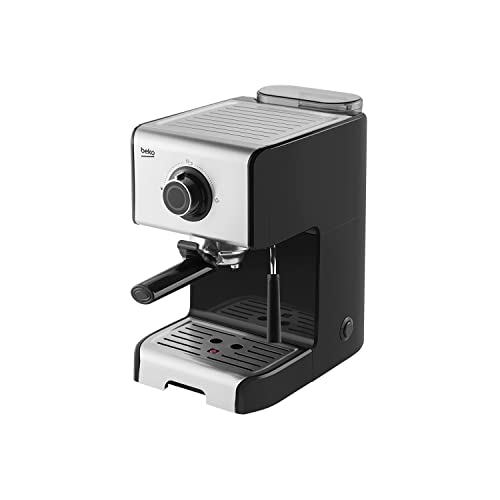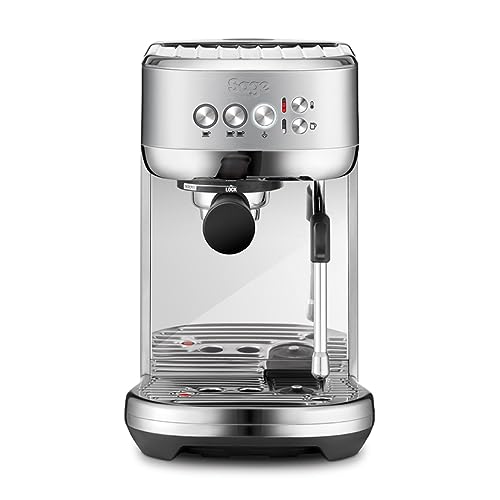 Create Third Wave Specialty Coffee at Home With a Small Espresso Machine
Create Third Wave Specialty Coffee at Home With a Small Espresso Machine
Create specialty coffee of the third wave at your home in under a minute from bean to espresso. 19 bars of pressure release maximum flavor and water is at the optimal temperature in less than 30 seconds.
This machine is slim and sleek and it is a perfect fit for the counter in your kitchen. It is also very energy-efficient and affordable, turning itself off after a period of nine minutes.
1. Easy to use
If you’re looking for a device that does the work for you, there are a variety of models to pick from. Some of the most popular are automated capsule machines which allow you to insert the pod and then press the button, or semi-automatics that require you pack a portafilter by hand but use an electric pump for consistent pressure and flow. These machines are fitted with a milk frother that can make cappuccinos and the latte. Fully automated machines are more expensive, but they do everything for you. They grind and brew coffee, and then heat and froth milk.
The smaller sizes of espresso makers typically have lower water capacity than the larger ones, which means you’ll have to refill them more often. However, they’re generally more accessible and have a lower profile which means they can be placed under cabinets.
This compact model from Mody is one of the cheapest models on our list, but it has enough power to make excellent espresso. It’s got 15 bars of pressure which is more than sufficient to make a decent shot. It’s also a good size for most kitchens and short enough to fit under some cupboards. Its small size doesn’t hamper its functionality, either – the cup-filter and drip tray are easy to remove and clean and it has settings for various types of drinks.
2. Easy to clean
A small espresso machine is a wonderful addition to any office or home, especially for people who like their coffee with a little bit of milk in it. But, it is important to keep in mind that these devices can be difficult to clean. It is because espresso machines require a lot of cleaning and consume an enormous amount of water.
There are many methods to clean an espresso machine. However, one of the most efficient methods is to use a special cleaning solution that is designed specifically for espresso machines. This solution can be made with vinegar, citric or commercial descaling products. Descale your buy espresso machines machine at least every two months.
It is also important to rinse the group heads and steam wand after each use. This prevents the buildup of coffee oils and other residues that could affect the taste of your coffee. To do this, switch off the water supply to the espresso machine. Remove the portafilters and group heads. Then, you can brush the group heads and gaskets with a brush, or coffee tool. Spray a cleaning solution into the group head, the dispersion screens as well as the surface of the group heads. Then, wash the gaskets and the group head with cool water to eliminate any residue. Then, replace the portafilters.
3. Easy to maintain
Making cafe-quality retro espresso maker at home required lots of effort and expertise, but the best new models make it nearly impervious to error. These models are also cheaper than ever and are smaller in size on the counter.
The best small espresso machine is easy to maintain and will assist you in keeping your kitchen tidy and organized. A clean coffee maker will make better coffee and last longer. It is essential to keep your coffee maker. This includes cleaning the drip tray, group head, and water tank.
After each use, rinse the machine with hot soapy tap water. Clean it thoroughly at least every six months. barista espresso coffee machine machines, however, require more frequent cleaning, at least once per week. This is because the parts of espresso machines are more likely to accumulate dirt and grime.
One of the most common reasons for a malfunctioning espresso machine is blocked ports and filters. Blockages can be the result of a poor tamping technique or grinding, or the coffee’s solubles aren’t fully extracted. These blockages may also be the result of a infrequent or inadequate cleaning.
The best way to avoid this is to stick to the same routine. Rinse portafilters, gaskets, baskets and group heads regularly. Scrub the steam wands and group heads well to get rid of any coffee grounds that have gotten stuck. Some people use distilled vinegar and water as a substitute for detergent.
4. Easy to store
A quick shot of espresso can provide the boost you need to keep going. It’s a common feature of European and American cafe culture and is even popular at some workplaces to aid employees in keeping working through their late night shifts.
Small espresso machines are usually light and only require a small counter space. They can be used for a trip or to work, making them an excellent choice for people who travel often.
The Ascaso Baby T Plus is an excellent example of this type of espresso machine. It comes with all of the features and programming options of a top-of-the-line espresso machine, including PID control and volumetric programming however it is much smaller. It can also save energy since it heats up or cools down slower than multiboiler devices.
 Another option that is worth considering is the Breville Bambino Plus. This machine is an all-in one solution that can make cappucino, espresso, and coffee. It uses a thermocoil to heat water to temperatures that are suitable for coffee which is a lot faster than the conventional electromechanical thermostatic controls found on older machines. It also cuts down on the time it takes to recover temperature from boiler to shot, which can greatly improve the taste and consistency. It is also very easy to use and requires little maintenance. It’s the ideal espresso machine for those who don’t want to spend money and time buying espresso from a coffee shop or bar every morning.
Another option that is worth considering is the Breville Bambino Plus. This machine is an all-in one solution that can make cappucino, espresso, and coffee. It uses a thermocoil to heat water to temperatures that are suitable for coffee which is a lot faster than the conventional electromechanical thermostatic controls found on older machines. It also cuts down on the time it takes to recover temperature from boiler to shot, which can greatly improve the taste and consistency. It is also very easy to use and requires little maintenance. It’s the ideal espresso machine for those who don’t want to spend money and time buying espresso from a coffee shop or bar every morning.
